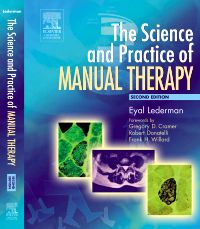The Science and Practice of Manual Therapy, previously entitled The Fundamentals of Manual Therapy, is an extensive examination of how manual therapy (MT) techniques work, and how to match the most suitable techniques to different conditions. Drawing on evidence-based research, it explores the physiological, neurological and psychophysiological responses of the human body to MT techniques. A highly practical book, which provides useful clinical strategies for the treatment of common conditions seen in manual therapy practice. This new edition has been completely rewritten, extensively updated and expanded, with addition of new research material, novel clinical approaches and demonstration of new techniques and assessments.The text aims to assist practitioner and students of manual therapy develop a deeper understanding of their patient's processes and how they may be affected by different MT techniques. It aims to help MT practitioners deliver a more effective and safer treatment and to be able to treat a broader range of conditions
New to this edition
Extensive update and expansion of first edition with addition of new research material and the references from the last 5 years.
Section 1 expanded to include more on the responses of muscle to mechanical stimuli as carried out in MT techniques.Section 2 rewritten and restructured to make it easier to understand and updated in the light of recent research.Expanded material on pain All references thoroughly updatedGeneral updating of all text and some new illustrations.
Key Features
- Comprehensive overview helps provide an understanding of how and why MT techniques work.
- Content is written in jargon-free, easy-to-read style, with most terms explained.
- Text is enhanced by over 120 diagrams, photographs and tables.
- Manual pain relief is extensively discussed throughout the book.
- Section 1 examines the direct effects of manual therapy on connective tissue and muscle physiology, examining how MT can help assist repair and adaptation processes in these tissues.
- Section 2 examines the effect of MT on the neuromuscular system, identifying conditions where neuromuscular dysfunctions can be treated by MT.
- Section 3 examines the psychological, emotional and behavioral impacts of MT, in addition to the psychophysiological affects of MT, including psychomotor, neuroendocrine, and autonomic responses.
- More than 1,000 references relevant to manual therapy are included, making this an essential source book for students and researchers of MT.
Author Information
By Eyal Lederman, DO, PhD, Eyal Lederman, Director, Centre for Professional Development in Osteopathy and Manual Therapy, London, UK; Visiting Professor, University College London (UCL) Institute of Orthopaedics and Musculoskeletal Science and and Practising Osteopath
1. IntroductionSECTION 1 The effect of manipulation on the tissue organization2. Manual therapy in the tissue dimension3. Assisting repair with manual therapy4. Affecting fluid flow with manual therapy5. Assisting adaptation: manual stretching6. Pain relief by manual therapy: the local tissue dimension7. Overview and summary of Section 1ReferencesSECTION 2 Neurological organization in manual therapy8. Manual therapy in the neurological dimension9. The motor system10. Proprioceptive stimulation by manual therapy techniques11. Affecting the lower motor system with manual therapy12. The adaptive code for neuromuscular re-abilitation13. Abilities, inability and re-abilitation14. Treating the intact motor system: behavioural and psychomotor dysfunctions15. Neuromuscular organisation in musculoskeletal damage16. Re-abilitating the damaged motor system17. Pain relief by manual therapy – neurological mechanisms18. Muscle tone19. Overview and summary of Section 2ReferencesSECTION 3 Psychological and psychophysiological processes in manual therapy20. Manual therapy in the psychological/psychophysiological dimension21. Origins of therapeutic potential of touch22. Psychological influences of manual therapy23. Psychophysiology of manual therapy24. Manual therapy in the psychosomatic field25. Touch as a therapeutic intervention26. Pain relief by manual therapy: psychological processes27. Overview and summary of Section 3ReferencesSECTION 4 Overview and clinical application28. Overview and clinical application of the science














